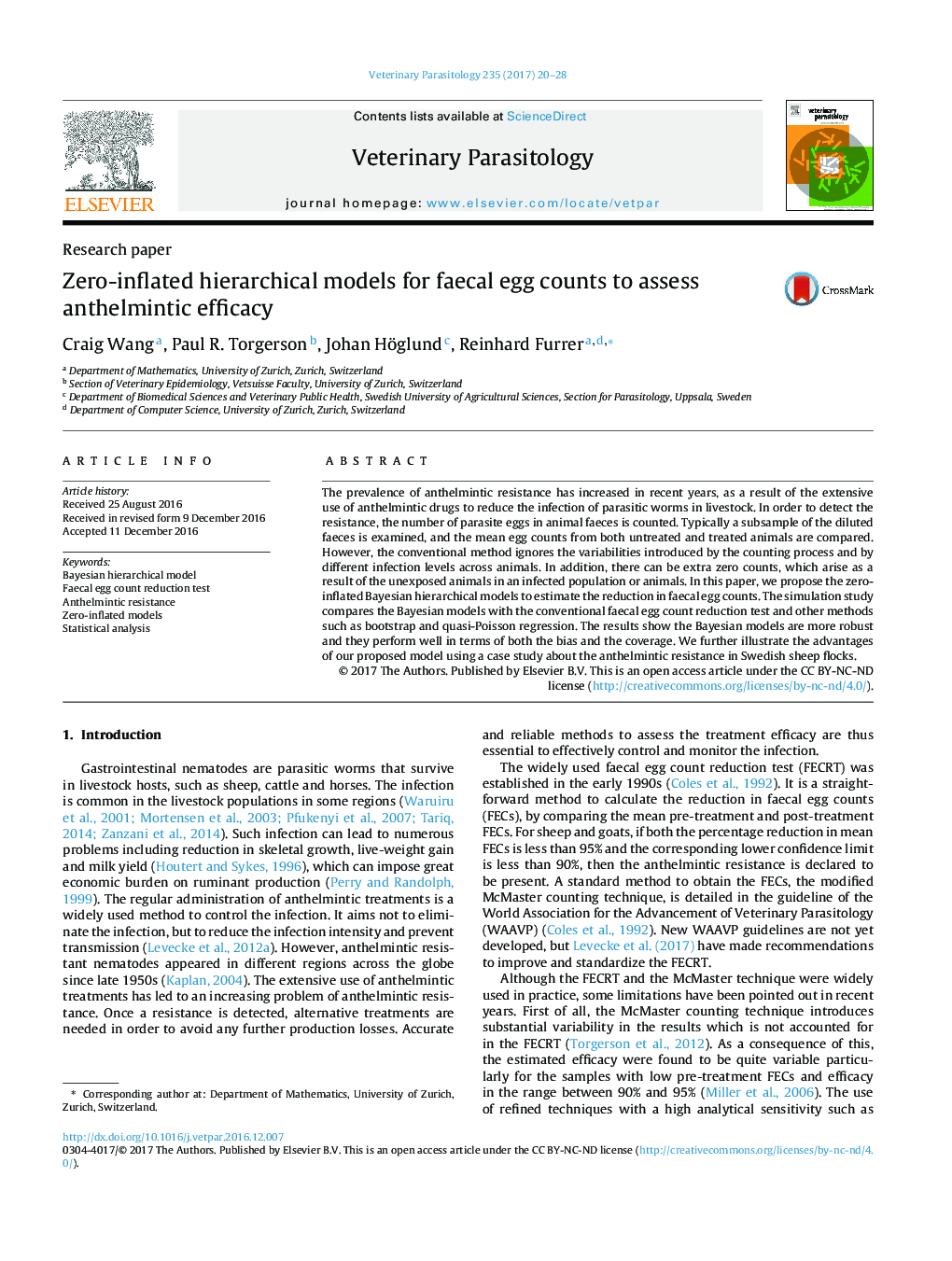| Article ID | Journal | Published Year | Pages | File Type |
|---|---|---|---|---|
| 5545851 | Veterinary Parasitology | 2017 | 9 Pages |
â¢The existing methods do not address all the features of faecal egg count data.â¢Zero-inflated Bayesian hierarchical models are proposed and explicitly formulated.â¢A simulation study compares the performance of different methods.â¢The proposed models offer robust analysis of faecal egg count data.
The prevalence of anthelmintic resistance has increased in recent years, as a result of the extensive use of anthelmintic drugs to reduce the infection of parasitic worms in livestock. In order to detect the resistance, the number of parasite eggs in animal faeces is counted. Typically a subsample of the diluted faeces is examined, and the mean egg counts from both untreated and treated animals are compared. However, the conventional method ignores the variabilities introduced by the counting process and by different infection levels across animals. In addition, there can be extra zero counts, which arise as a result of the unexposed animals in an infected population or animals. In this paper, we propose the zero-inflated Bayesian hierarchical models to estimate the reduction in faecal egg counts. The simulation study compares the Bayesian models with the conventional faecal egg count reduction test and other methods such as bootstrap and quasi-Poisson regression. The results show the Bayesian models are more robust and they perform well in terms of both the bias and the coverage. We further illustrate the advantages of our proposed model using a case study about the anthelmintic resistance in Swedish sheep flocks.
